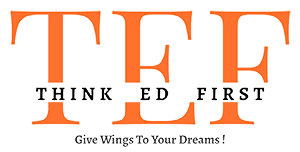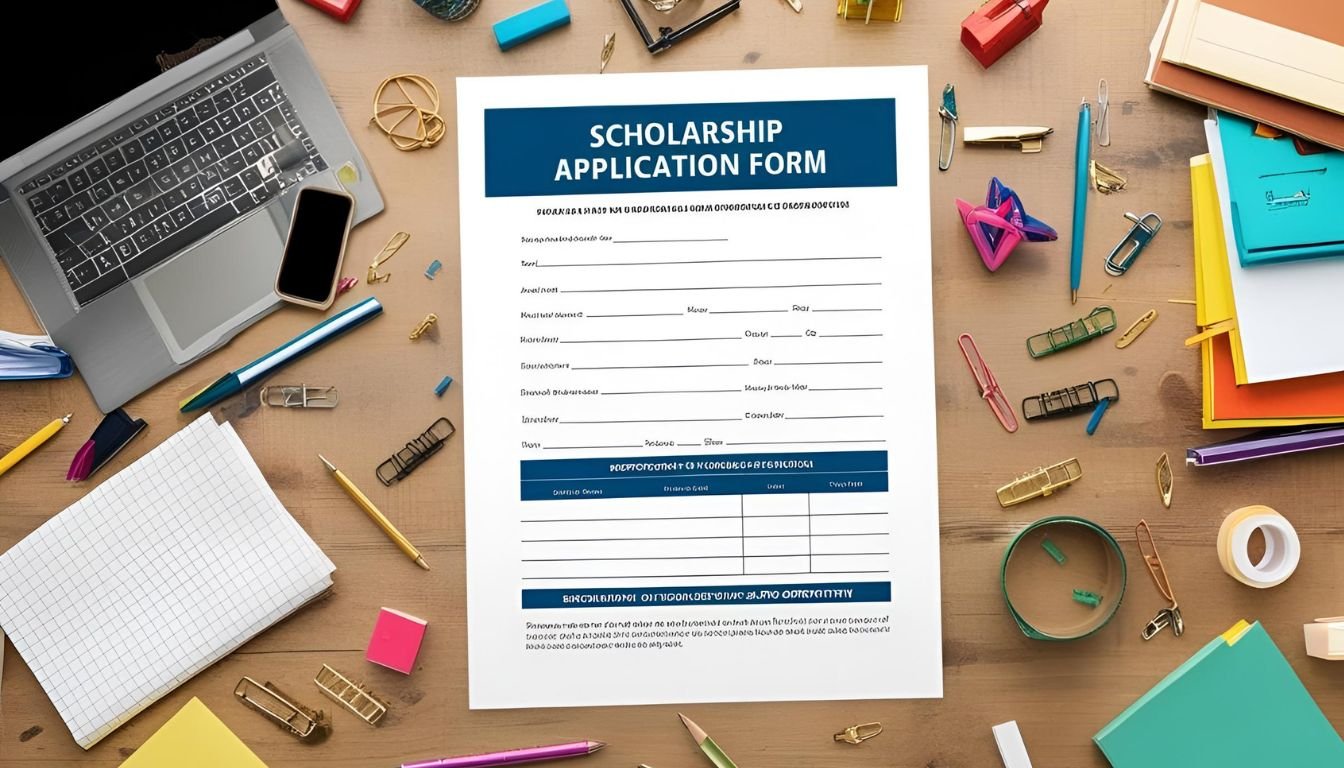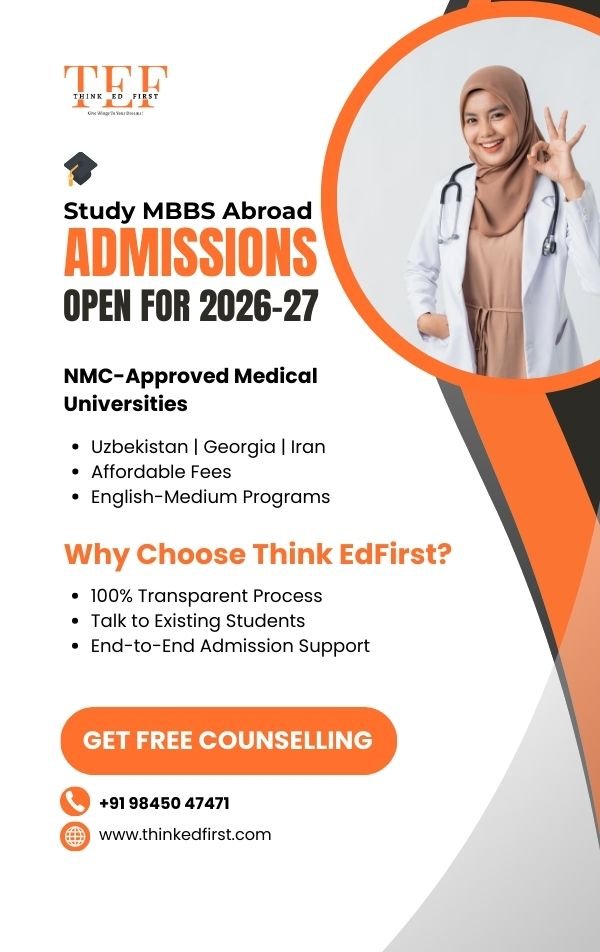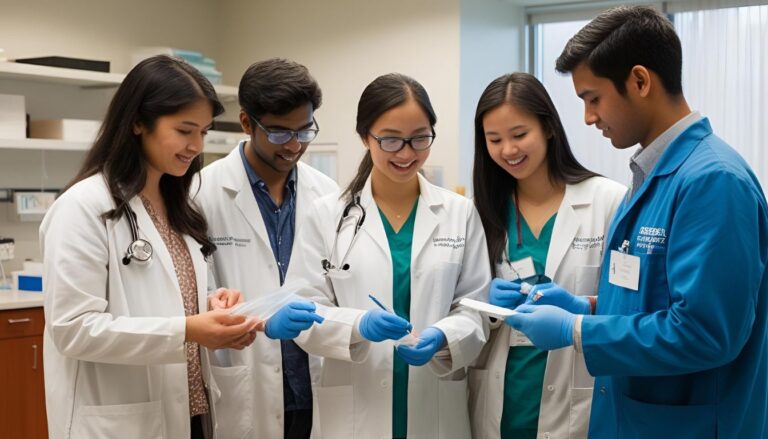For many Indian students, becoming a doctor is a lifelong dream. However, the high costs of medical education can often feel like an insurmountable barrier. What if there was a way to achieve this dream without breaking the bank?
In recent years, more students are looking beyond borders for affordable and quality education. Countries offering cost-effective programs are becoming increasingly popular. These options not only reduce financial stress but also provide exposure to diverse learning environments.
For those considering this path, understanding the financial aspects is crucial. From tuition fees to living expenses, every detail matters. Fortunately, there are opportunities that can ease this burden and make your aspirations more attainable.
This guide will walk you through the essentials, helping you navigate the process with confidence. Let’s explore how you can turn your dream into reality.
Why Pursue an MBBS Degree in Bangladesh?
Medical education abroad offers unique opportunities for aspiring doctors. For Indian students, Bangladesh stands out as a top choice due to its affordability and quality. The country provides a high standard of education with living costs as low as $328 per month.
One of the key advantages is the recognition of degrees by international bodies like WHO and NMC. This ensures that graduates can practice globally. Additionally, the medium of instruction is English, making it easier for international students to adapt.
Cultural similarities and geographic proximity to India make Bangladesh a comfortable destination. Unlike private Indian colleges, there are no donation requirements, making it more accessible. The 5-year program includes a 1-year internship, providing hands-on experience.
Here’s a quick comparison of studying in Bangladesh versus India:
| Feature | Bangladesh | India |
|---|---|---|
| Tuition Fees | Affordable | Higher in private colleges |
| Living Costs | $328/month | Higher in metro cities |
| Medium of Instruction | English | English/Regional |
| Donation Requirements | None | Common in private colleges |
| Global Recognition | WHO, NMC | NMC |
With lower competition ratios and global clinical exposure through SAARC networks, Bangladesh offers a well-rounded medical education. For Indian students, it’s a practical and rewarding choice.
Understanding the Cost of MBBS in Bangladesh
Budgeting is a key factor when considering studying abroad. For aspiring doctors, managing expenses effectively ensures a smooth academic journey. Let’s break down the financial aspects to help you plan better.
Tuition Fees for International Students
Tuition fees for medical programs vary depending on the institution. On average, the total cost ranges from $35,000 to $53,000 for the entire course. Some colleges offer installment plans, making it easier to manage payments after the first year.
Additional services like airport transfers, MCI coaching, and study materials are often included in the tuition package. This reduces extra costs and provides added convenience for students.
Living Expenses and Accommodation
Living costs are another important consideration. On average, monthly expenses amount to around $328. This includes accommodation, food, transport, and personal needs.
- Accommodation: Hostels cost around $75 per month, while private apartments range from $370. Hostels often include meal plans, saving you additional food expenses.
- Food: Monthly food costs are approximately $150. University meal plans can help reduce this expense.
- Transport: Public transport is affordable, with monthly costs around $40.
- Study Materials: Budget around $50 per month for books and other resources.
Seasonal price variations exist between cities like Dhaka and Chittagong. Dhaka tends to be more expensive, so choosing a location wisely can help save money.
By understanding these costs and planning ahead, you can make informed decisions and focus on your studies without financial stress.
Top Scholarships for MBBS in Bangladesh
Financial support plays a crucial role in making medical education accessible. For students aiming to study abroad, scholarships can significantly reduce the financial burden. Let’s explore some of the top funding options available for aspiring doctors.
University of Dhaka Scholarship and Financial Aid
The University of Dhaka offers merit-based awards for high-achieving students. These include full or partial tuition waivers based on academic performance. Eligibility is often determined by HSC exam scores, ensuring fair opportunities for deserving candidates.
Holy Family Red Crescent Medical College Scholarship
This institution provides financial aid based on both merit and need. Students excelling in the entrance exam, which covers Physics, Chemistry, and Biology, may qualify for significant tuition reductions. Specializations like General Medicine and Anaesthesiology are also supported.
Bangladesh Medical College Scholarship
This college offers awards to students demonstrating exceptional academic potential. A commitment to rural service post-graduation is often required, ensuring graduates contribute to underserved communities.
Fortune Education Scholarships
Fortune Education supports students with a minimum of 60% in their 10+2 exams. These awards aim to make medical education more affordable, covering a portion of tuition fees.
Dhaka National Medical College Scholarship
This college provides financial assistance to top performers in the entrance exam. A 100% tuition waiver is awarded to the top three scorers, making it a highly competitive opportunity.
These funding options not only ease financial stress but also encourage academic excellence. By exploring these opportunities, students can focus on their studies and achieve their dreams of becoming doctors.
Eligibility Criteria for Scholarship Application Bangladesh MBBS
Meeting the eligibility criteria is the first step toward securing financial aid for medical studies. Understanding these requirements ensures that students are well-prepared and can avoid unnecessary delays in the process.
Academic performance plays a key role in determining eligibility. Students must have scored a minimum of 60% in their 10+2 exams, with Physics, Chemistry, and Biology as core subjects. Additionally, a NEET score of at least the 50th percentile is mandatory for Indian applicants.
Age is another important factor. Applicants must be between 17 and 25 years old at the time of submission. This ensures that candidates are within the ideal age range for medical education.
Language proficiency is also considered. While IELTS scores of 6.0 or TOEFL scores of 80 are typically required, exemptions may apply for students who have studied in English-medium schools. A medical fitness certificate is another essential document, confirming that the applicant is physically and mentally fit for the rigorous program.
Community service is often a requirement, with a minimum of 100 hours needed to demonstrate commitment to social responsibility. This criterion highlights the importance of giving back to society, a core value in the medical profession.
| Criteria | Details |
|---|---|
| Academic Requirements | Minimum 60% in 10+2 with PCB subjects, NEET 50th percentile |
| Age Limit | 17-25 years |
| Language Proficiency | IELTS 6.0/TOEFL 80 (exemptions available) |
| Medical Fitness | Certificate required |
| Community Service | Minimum 100 hours |
By meeting these eligibility criteria, students can position themselves as strong candidates for financial aid. Proper preparation and attention to detail are key to a successful application.
How to Apply for SAARC Scholarships in Bangladesh
Navigating the SAARC funding process can open doors to affordable medical education. For students aiming to study abroad, this program offers a structured pathway to financial support. Here’s a step-by-step guide to help you through the process.
Start by registering on the SAARC portal. This involves filling out the application form with accurate details. Ensure all required documents are ready for submission. These include academic transcripts, identification proofs, and a medical fitness certificate.
Document authentication is a crucial step. All papers must be attested by the Ministry of Education and the Ministry of Foreign Affairs in your home country. Additionally, authentication by the Bangladesh Embassy is required. This ensures your documents meet international standards.
Government colleges often require a minimum GPA of 8.0 for eligibility. Students with a combined GPA of 9.00 in ‘O’ and ‘A’ level exams, including at least 4.00 in Biology, are prioritized. Meeting these academic benchmarks strengthens your candidacy.
SAARC allocates seats based on country-specific quotas. For Indian students, 22 seats are reserved for MBBS and 2 for BDS. Understanding these quotas helps you gauge your chances of selection.
Post-selection, orientation workshops are conducted to help students adapt. These sessions cover academic expectations, cultural norms, and practical tips for living in Bangladesh. The SAARC cultural integration program further enhances your experience by fostering cross-cultural understanding.
Keep track of deadlines to avoid last-minute stress. The final submission date for documents is January 15, 2025. Missing this deadline can disqualify your application. Stay organized and plan ahead to ensure a smooth process.
By following these steps, you can navigate the SAARC funding process with confidence. Proper preparation and attention to detail are key to securing financial support for your medical education.
Step-by-Step Guide to the Scholarship Application Process
Starting the journey toward securing financial aid requires careful planning and attention to detail. By breaking down the process into clear steps, you can ensure a smooth and successful experience. Let’s explore how to prepare, complete, and submit your materials effectively.
Preparing Required Documents
Gathering the necessary documents is the first step. These typically include academic transcripts, entrance exam scores, and identification proofs. Ensure all papers are attested by the relevant authorities, such as the Ministry of Education and the Bangladesh Embassy.
Additionally, a medical fitness certificate is often required. This confirms your physical and mental readiness for the program. Double-check the list of required documents provided by the institution to avoid missing anything.
Filling Out the Application Form
Once your documents are ready, proceed to fill out the application form. Pay close attention to details like your personal information, academic history, and contact details. Mistakes here can lead to delays or disqualification.
If you’re unsure about any section, reach out to the institution’s support team for clarification. Many universities also provide guidelines to help applicants complete the form accurately.
Submitting Your Application
After completing the form, submit it along with your documents. Most institutions offer online portals for this purpose. However, if physical submission is required, consider using reliable courier services like DHL or FedEx to ensure safe delivery.
Keep track of your application status through the university portal. If you don’t receive a confirmation within the expected timeframe, send a follow-up email to verify receipt. This proactive approach helps avoid last-minute issues.
- Track your application status regularly through the university portal.
- Use trusted courier services for physical submissions.
- Send follow-up emails to confirm receipt of your materials.
- Have a backup plan in case of portal errors, such as emailing your documents directly.
By following these steps, you can navigate the process with confidence and increase your chances of success.
Important Deadlines for MBBS Scholarships in Bangladesh
Staying on top of deadlines is critical for securing financial aid. Missing a key date can delay or even disqualify your chances of success. Let’s break down the essential timelines to help you plan effectively.
The SAARC deadline is April 30 annually. This is a crucial date for students applying through this program. Ensure all documents are submitted well in advance to avoid last-minute issues.
University-specific timelines vary. For example, the University of Dhaka requires submissions by March 15, while Holy Family Red Crescent Medical College has a May 1 deadline. Check with your chosen institution for exact dates.
- Early Bird Benefits: Submitting early can offer perks like a 5-10% fee waiver. This not only saves money but also reduces stress.
- Document Verification: Allow 6-8 weeks for this process. Delays here can impact your overall timeline.
- Visa Processing: After selection, visa processing takes additional time. Plan accordingly to ensure a smooth transition.
By keeping track of these deadlines and planning ahead, you can navigate the process with confidence. Proper preparation ensures you stay focused on your academic goals without unnecessary stress.
Merit-Based vs. Need-Based Scholarships
Financial aid comes in two main forms: merit-based and need-based. Understanding the differences helps students choose the right option for their circumstances. Let’s explore the key aspects of each type.
Merit-based aid rewards academic excellence, extracurricular achievements, or special talents. About 60% of total aid falls into this category. Students with strong portfolios often qualify for these opportunities. Building a compelling profile is essential for success.
Need-based aid focuses on financial circumstances. Around 40% of aid is allocated to students from low-income families. The income ceiling for eligibility is typically $15,000 annually. This ensures support reaches those who need it most.
Some institutions, like Fortune Education, offer hybrid options. These combine merit and need-based criteria, providing flexibility for students. Conversion between categories is also possible in certain cases, allowing students to adapt as their circumstances change.
| Criteria | Merit-Based | Need-Based |
|---|---|---|
| Focus | Academic or extracurricular achievements | Financial need |
| Percentage of Aid | 60% | 40% |
| Eligibility | Strong portfolio, high grades | Income below $15,000 annually |
| Hybrid Options | Available at Fortune Education | Available at Fortune Education |
By understanding these criteria, students can identify the best path for their goals. Whether through merit or need-based aid, financial support makes education more accessible.
Tips for Writing a Winning Scholarship Application
Crafting a compelling narrative is essential for standing out in competitive selection processes. A well-structured application not only highlights your achievements but also reflects your dedication and passion. Let’s explore some practical tips to help you create a submission that leaves a lasting impression.
Start with a clear and concise structure. Dhaka University recommends a 3-paragraph format for Statements of Purpose (SOP). The first paragraph should introduce your background and motivation. The second can focus on your academic and extracurricular achievements. Finally, the third paragraph should outline your future goals and how the scholarship aligns with them.
Quantifiable achievements make your application more impactful. Instead of vague statements, use specific metrics. For example, mention how you raised $5,000 for a community project or achieved a 200% increase in event participation. These details provide concrete evidence of your capabilities.
Incorporating alumni success stories can also strengthen your narrative. Highlight how past recipients have leveraged the scholarship to achieve their goals. This not only demonstrates your research but also aligns your aspirations with the program’s mission.
Selection committees often prioritize themes like leadership, community service, and innovation. Tailor your application to reflect these values. Show how your experiences align with the organization’s goals. This creates a cohesive and persuasive narrative.
Proofreading is a critical step in the application process. A well-polished submission reflects your attention to detail. Use the checklist below to ensure your materials are error-free and professionally formatted.
| Checklist Item | Details |
|---|---|
| Grammar | Check for subject-verb agreement, tenses, and sentence structure. |
| Punctuation | Ensure proper use of commas, periods, and quotation marks. |
| Formatting | Use consistent font, spacing, and alignment throughout. |
| Clarity | Avoid jargon and ensure sentences are easy to understand. |
| Accuracy | Verify all facts, dates, and names for correctness. |
By following these tips, students can create a strong and memorable application. Attention to detail and a personalized approach are key to standing out in a competitive pool of candidates.
Common Mistakes to Avoid in Your Scholarship Application
Avoiding common pitfalls can significantly improve your chances of success. Many applicants overlook small details that can lead to disqualification. Let’s explore the most frequent errors and how to prevent them.
Formatting errors in academic documents are a major issue. Inconsistent fonts, improper spacing, and missing page numbers can make your materials look unprofessional. Always follow the guidelines provided by the institution.
Mismatched recommendation letters can weaken your application. Ensure your referees understand the program’s goals and tailor their letters accordingly. A generic letter may not highlight your strengths effectively.
Overlooking country-specific requirements is another common mistake. Each program may have unique criteria, such as additional certifications or language tests. Research thoroughly to avoid missing these details.
Last-minute technical issues can derail your submission. Uploading documents at the deadline increases the risk of errors. Submit your materials at least 24 hours early to allow time for troubleshooting.
Incomplete financial disclosures can lead to disqualification. Provide accurate and detailed information about your financial situation. Missing or incorrect data can delay processing or result in rejection.
| Mistake | Solution |
|---|---|
| Formatting Errors | Follow guidelines, use consistent fonts and spacing. |
| Mismatched Recommendations | Tailor letters to align with program goals. |
| Country-Specific Requirements | Research and fulfill all unique criteria. |
| Technical Issues | Submit materials 24 hours before the deadline. |
| Incomplete Financial Disclosures | Provide accurate and detailed information. |
By addressing these common mistakes, you can create a polished and compelling application. Attention to detail and careful planning are key to standing out in a competitive pool of candidates.
Alternate Funding Options for Indian Students
Exploring alternate funding options can ease the financial burden of studying abroad. While scholarships are a popular choice, there are other ways to manage expenses effectively. Let’s look at two key options: education loans and part-time work opportunities.
Education Loans
Many banks and financial institutions offer pre-approved loans with competitive interest rates, starting as low as 8.5%. These loans cover tuition fees, living expenses, and other educational costs. Repayment typically begins after graduation, giving students time to focus on their studies.
To apply, students need to provide academic records, proof of admission, and a co-signer. Some banks also offer flexible repayment plans, making it easier to manage finances post-graduation.
Part-Time Work Opportunities
Part-time work is another way to support your education financially. Most countries allow international students to work up to 20 hours per week during the academic term. Here are some popular options:
- Campus Jobs: Many universities have job boards listing openings for roles like library assistants or lab technicians.
- Medical Transcription: This role is ideal for medical students, offering flexible hours and relevant experience.
- Paid Research Assistant Positions: These roles not only provide income but also enhance your academic profile.
By combining these funding options, students can reduce financial stress and focus on achieving their academic goals.
Life as an MBBS Student in Bangladesh
Adapting to a new country while pursuing medical studies can be both exciting and challenging. For Indian students, Bangladesh offers a supportive environment that helps ease the transition. Cultural adaptation programs are available to help newcomers adjust to the local lifestyle and academic expectations.
Indian student associations play a vital role in creating a sense of community. These networks provide guidance, organize events, and offer emotional support. They also help students navigate the university system and connect with peers facing similar experiences.
Clinical rotations are a crucial part of the medical curriculum. Students gain hands-on experience at renowned hospitals like Dhaka Medical College and Bangladesh Medical College. These rotations provide exposure to diverse medical cases and enhance practical skills.
The holiday schedule in Bangladesh often aligns with Indian festivals, allowing students to celebrate occasions like Diwali and Holi. This helps maintain a connection with their cultural roots while studying abroad.
Alumni networks offer valuable career support services. Graduates can access mentorship, job placement assistance, and networking opportunities. These resources help students transition smoothly into their professional careers after completing their studies.
Overall, life as a medical student in Bangladesh is a rewarding experience. The combination of academic rigor, cultural immersion, and support systems ensures a well-rounded journey for aspiring doctors.
Frequently Asked Questions About MBBS Scholarships
Many students have questions about funding their medical education. Here are answers to some of the most common queries to help you navigate the process with confidence.
- What is the processing time for SAARC applications?
The processing time typically takes 8-10 weeks. Ensure all documents are submitted correctly to avoid delays. - Can a scholarship be renewed after academic probation?
Yes, renewal is possible if the student meets the required academic standards. Check with the institution for specific guidelines. - Are there tax implications for full-ride scholarships?
In some cases, scholarships may be taxable. Consult a tax advisor to understand how it applies to your situation. - Is spouse visa eligibility available during studies?
Yes, most countries allow dependent visas for spouses. Confirm the requirements with the immigration authorities. - Can students convert to permanent residency post-graduation?
Many countries offer pathways to permanent residency for graduates. Research the specific policies of your study destination.
Understanding these details can help you plan better and make informed decisions about your education journey. If you have more questions, reach out to the institution or program coordinator for clarity.
Conclusion
Planning your journey toward higher education requires careful attention to deadlines and requirements. Key milestones include admissions opening in August/September, document submission, and visa processing. Staying organized ensures you don’t miss critical steps.
Before submitting your materials, double-check your passport, birth certificate, mark sheets, and proof of identity. All documents must be attested to meet eligibility criteria. A complete checklist helps avoid last-minute issues.
For additional support, contact your local embassy or educational counselors. They can provide guidance on the process and answer any questions you may have. Upcoming changes in 2024 policies may also impact your application, so stay informed.
Starting early gives you ample time to prepare and meet all requirements. Early preparation reduces stress and increases your chances of success. Take the first step today to secure your future in education.





